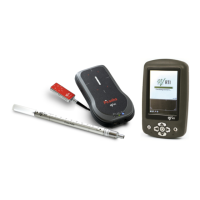5. Measurements with the Piranha System
Mammography
Piranha & QABrowser Reference Manual
2014-06/5.5C
114
have probably selected a set kV value higher than the actual measuring range. Another
reason may be that you have selected wrong radiation quality compared to what the
generator is set to.
To be able to trust the kVp reading it is always very important to make the
Position Check to verify that the whole detector area is uniformly irradiated.
The Position Check is normally started automatically every time you
change Radiation Quality, but please make sure to do a Position Check
every time the Piranha is repositioned.
The kV and radiation waveform is always stored together with the RTD values and can
be displayed by tapping the Wave button. The kVp calibration for Piranha is made
without the compression paddle in place.
The purpose of dose measurement is often to determine the ESAK, Entrance Surface
Air Kerma (or ESE, Entrance Skin Exposure).
It is recommended to perform dose measurements according to a mammography
protocol. One is the "European Protocol on dosimetry in mammography EUR 16263 EN
from the European commission". Chapter 3 in this protocol describes in detail the
determination of AGD, Average Glandular Dose (or MGD, Mean Glandular Dose). The
AGD is derived from measurements of the HVL and of the ESAK. Make use of tabulated
conversion factors from ESAK to AGD. See Average Glandular Dose, AGD (MGD) .
5.5.2 Setting Up the Piranha for Mammography
123

